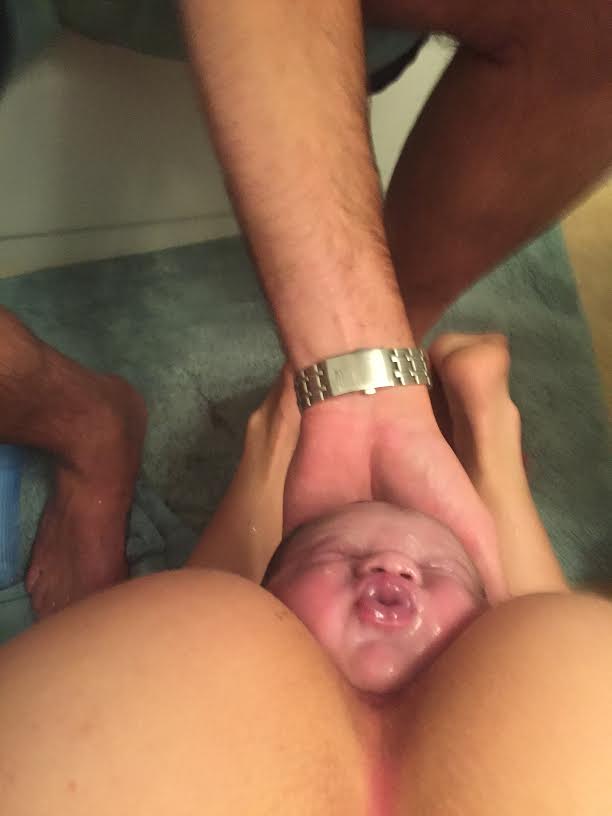 In the doula training program I teach, something we spend a lot of time discussing is how to assess what phase of birth a woman is in with practical behavioral and external signs. In my experience, external signs are far more indicative and helpful in terms of what’s happening in a birth than routine cervical checks. In fact, the vast majority of my clients birth without any cervical exams at all.
In the doula training program I teach, something we spend a lot of time discussing is how to assess what phase of birth a woman is in with practical behavioral and external signs. In my experience, external signs are far more indicative and helpful in terms of what’s happening in a birth than routine cervical checks. In fact, the vast majority of my clients birth without any cervical exams at all.
One interesting sign of progress is something you’ll hear doulas and midwives refer to as “The Purple Line.”
In the above photo you see the birthing woman is on her hands and knees, which is a very common position women will put themselves into when having the freedom to move around during birth.
Coming up from the space between her bum cheeks, you can clearly see a thick red / purple line extending upwards toward her lower back.
As dilation occurs and the baby descends down through the pelvis a visible change occurs externally that is an indication of how far the birth has progressed. The purple line can sometimes begin to appear early-ish on in dilation, but doesn’t become pronounced until later on.
Something to remember is that if you find yourself squinting and staring and wondering “is that it?!” in regards to spotting the purple line, it probably is NOT IT. I actually find this to be true of almost all ways of assessing the various phases of birth. If you are staring at your timing record thinking “it looks like most of these waves are close together” or “I THINK she kind of is starting to sound active”, the first thing to wonder is if you just HOPE the birth is reaching the more progressed phases. If you have to search really hard for proof that things are getting close, especially with first babies, they probably aren’t!
Anytime you are trying to determine how “early” or “active” a women seems to be in her birth process, do a quick check with yourself to see if you are feeling tired or impatient before letting yourself think a baby is about to appear at any moment. This self-check technique is the main way I keep myself feeling patient and supportive during those long first-time-mother births that I have become so known for supporting.
As a side note, another other cool thing about this photo is the father’s hand lovingly cupping the baby’s head as everyone waits for the next sensation to come, which will bring the parents the rest of their baby. Almost all of my clients catch their own babies; there is nothing cooler than being the first one to touch a brand new human being, and who better to receive that new person into the world than the baby’s own parents if they so choose?! You can read the family’s (amazing) full birth story here.
If you are interested in learning more about the phases of birth, both the doula training course and Birth at Home prenatal classes I teach spend a good chunk of time on how to listen for and understand the practical external and behavioral signs of birth progress.
